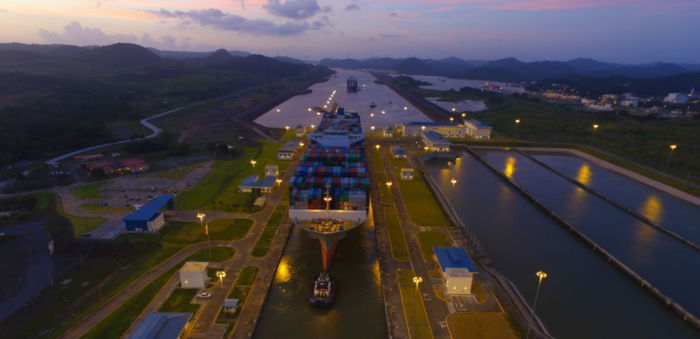The expanded Panama Canal met on March 22, 1.000 days of operation, exceeding expectations and redefining global trade routes. From the first days of its operations in 2016, the waterway saw an increase in cargo tonnage, as a result of the transfer of new segments and new line services that have been redirected by the route through Panama, capitalizing on the reduction of time and costs that it offers the inter-oceanic route.
As Jorge L. Quijano, the Panama Canal Administrator commented during the 1.000 days of operation, not only did the Panama Canal successfully managed the Neopanamax Locks, it also surpassed the forecasts the administration had for the period of operation, achieving efficiency and productivity.
During the 1.000 days of operation, more than 5.700 Neopamax vessels have voyaged through the waterway, with container ships accounting for about 51% of traffic, followed by liquefied petroleum gas and liquefied natural gas ships with almost 26.2 and 11.3%, respectively.
[smlsubform prepend=”GET THE SAFETY4SEA IN YOUR INBOX!” showname=false emailtxt=”” emailholder=”Enter your email address” showsubmit=true submittxt=”Submit” jsthanks=false thankyou=”Thank you for subscribing to our mailing list”]
So far in fiscal year 2019, the average daily transit is 7.5 Neopanamax vessels. Yet, depending on the schedule, up to 12 transits daily have been attended. Although there are fewer ships that transit through the neopanamax locks than through the panamax locks, they represent 50.8% of the toll revenues, since the vessels have greater cargo capacity.
The Waterway also enabled the sailing of bulk carriers, tankers, vehicle carriers and cruise ships through the Neopanamax Locks.
In addition, the optimization of investment in the Neopanamax Locks operations, enabled the waterway to provide additional capacity, flexibility and efficiency across all sectors.
The changes, for instance, include the Transit Reservation System and transit restrictions, as well as the addition of two reservation spaces for the Neopanamax Locks, bringing the total number of booking spaces from six to eight.
Therefore, the Canal has marked a series of recent milestones, including record annual tonnage and the first transit of four LNG vessels in one day last October.
On February, the Panama Canal celebrated Moody’s Investor Service upgrade of the Panama Canal’s long-term rating, based on the canal’s strong performance since the expansion’s inauguration.
Following, Panama Canal also joined the IMO-supported Global Industry Alliance to Support Low Carbon Shipping (GIA).

































































